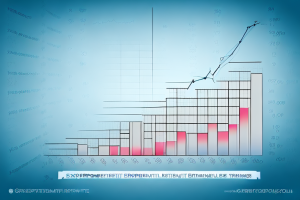Retirement planning is a critical aspect of financial security, and understanding the importance of it cannot be overstated. As you envision the lifestyle you desire in your golden years, it is essential to have a clear idea of how much money you will need to sustain that lifestyle. In this article, we will explore the various factors that influence your retirement savings target and guide you through the process of calculating your retirement income needs. By taking a comprehensive approach to retirement planning, you can make informed decisions and set yourself up for a financially secure future.
Calculating your retirement income needs involves considering a range of factors, such as your desired lifestyle in retirement, current financial situation, retirement expenses, and investment strategies. Let’s delve into each of these areas to understand how they contribute to determining the amount you need to retire with $300,000 per year.
Understanding the importance of retirement planning
Retirement planning is crucial because it allows you to take control of your financial future. With proper planning, you can maintain your desired standard of living, pursue new interests, and enjoy a worry-free retirement. By starting early and making regular contributions to retirement accounts, you give your money the opportunity to grow through compound interest and investment returns.
One of the key benefits of retirement planning is the ability to have a sense of security and peace of mind. Knowing that you have a plan in place for your financial future can alleviate stress and anxiety about what lies ahead. It provides a sense of stability and confidence, allowing you to focus on enjoying your retirement years without constantly worrying about money.
Another important aspect of retirement planning is the ability to adapt to changing circumstances. Life is unpredictable, and unexpected events such as medical emergencies or economic downturns can have a significant impact on your finances. By having a retirement plan in place, you can better navigate these challenges and make necessary adjustments to ensure your financial well-being.
Calculating your retirement income needs
To determine how much money you need in retirement, you should begin by assessing your desired lifestyle. Take into account factors like housing, healthcare, travel, hobbies, and any other expenses you anticipate. Estimating your retirement expenses and cost of living involves thorough research and consideration of potential inflationary effects over time.
Once you have a clear idea of your retirement expenses, you can calculate the annual income needed to support your lifestyle. In this case, aiming for $300,000 per year requires careful planning and consideration of various factors discussed in the following sections.
One important factor to consider when calculating your retirement income needs is the potential impact of healthcare expenses. As you age, the likelihood of needing medical care increases, and healthcare costs can be significant. It is essential to factor in expenses such as insurance premiums, prescription medications, doctor visits, and long-term care costs when determining your retirement income requirements.
Another aspect to consider is the potential for unexpected expenses in retirement. While you may have estimated your regular living expenses, it is crucial to have a contingency plan for unforeseen circumstances. This could include emergency medical expenses, home repairs, or other unexpected financial burdens. Building a buffer into your retirement income plan can provide peace of mind and ensure you are adequately prepared for any unexpected costs that may arise.
Exploring the factors that influence your retirement savings target
Several factors will influence the amount of money you need to save for retirement. These factors include your desired lifestyle, the number of years you expect to spend in retirement, inflation rates, and the returns you hope to achieve on your investments. By understanding and considering these variables, you can establish a target retirement savings amount that aligns with your goals.
Another important factor to consider when determining your retirement savings target is your expected healthcare costs. As you age, healthcare expenses tend to increase, and it’s crucial to account for these costs in your retirement savings plan. Factors such as the rising cost of medical treatments, long-term care needs, and potential health issues should be taken into consideration when calculating your target savings amount. By factoring in healthcare costs, you can ensure that you have enough funds to cover your medical needs during retirement.
Determining your desired lifestyle in retirement
Before you retire, it’s important to envision the lifestyle you desire in your golden years. This step involves considering various aspects of your life, such as housing, travel, healthcare, and leisure activities. By estimating the costs associated with each element, you can establish a realistic budget for your retirement years.
One important aspect to consider when determining your desired lifestyle in retirement is housing. You may want to downsize to a smaller home or consider moving to a retirement community. It’s important to research the costs associated with different housing options and factor them into your budget.
Another factor to consider is travel. Many retirees have dreams of exploring new destinations and ticking off items from their bucket list. Whether it’s a cross-country road trip or an international adventure, it’s important to estimate the costs of transportation, accommodation, and activities to ensure that your retirement budget can accommodate your travel aspirations.
Analyzing your current financial situation and savings
To assess your current financial situation, start by evaluating your income, expenses, and existing savings. Understanding how your current finances align with your retirement goals will help you determine the steps you need to take to bridge any gaps. Consider consulting with a financial advisor for personalized guidance on optimizing your savings and investments.
Additionally, it is important to review your debt obligations and any outstanding loans. Evaluating your debt-to-income ratio can provide insight into your overall financial health and help you make informed decisions about managing and reducing your debt. By addressing high-interest debts and creating a plan to pay them off, you can free up more funds to contribute towards your savings and retirement goals.
Estimating your retirement expenses and cost of living
Estimating your retirement expenses involves analyzing the potential costs associated with various aspects of your life. These may include housing expenses, healthcare costs, travel expenses, and discretionary spending. It’s crucial to consider both present and future factors, such as inflation and changing healthcare needs.
Considering inflation and its impact on your retirement funds
Inflation erodes the purchasing power of money over time. Thus, it is crucial to account for inflation when calculating your retirement income needs. Consider historical inflation rates and project future rates to ensure your retirement savings can withstand the effects of rising prices.
Evaluating different investment strategies for reaching your retirement goal
Investment strategies play a vital role in building retirement savings. It’s essential to diversify your investments to minimize risk and maximize returns. Explore various investment vehicles such as stocks, bonds, mutual funds, and real estate. Consult with a financial advisor to identify the strategies that align with your risk tolerance and financial goals.
Exploring the potential returns and risks associated with various investment options
Each investment option carries its own set of risks and potential returns. While some investments may offer higher returns, they often come with increased risk. Understand the risks associated with each investment option and carefully consider your risk tolerance before making any investment decisions.
Discussing the benefits of diversified investment portfolios for long-term financial security
Diversification is a key strategy for long-term financial security. By spreading your investments across different asset classes and industries, you reduce the risk of losing all your savings if one investment performs poorly. Diversification helps balance your portfolio and provides better protection against market volatility.
Examining the role of pensions, Social Security, and other sources of income in retirement planning
When planning for retirement, it’s important to consider your potential income from pensions, Social Security, and other sources. This income can supplement your retirement savings and ease the financial burden. Understand the eligibility requirements and estimated benefit amounts for these income sources.
Planning for unexpected expenses and emergencies in retirement
It’s crucial to plan for unexpected expenses and emergencies in retirement. Consider setting up an emergency fund to cover unexpected healthcare costs, home repairs, or other unforeseen circumstances. Having a financial cushion can provide peace of mind and ensure your retirement savings remain intact.
Identifying tax-efficient withdrawal strategies to maximize your retirement income
Withdrawal strategies can impact your retirement income and tax liability. By developing tax-efficient withdrawal strategies, you can minimize your tax burden and maximize the longevity of your retirement savings. Consult with a financial advisor or tax professional to optimize your withdrawal strategy.
Understanding the impact of healthcare costs on your retirement budget
Healthcare costs can be a significant factor in retirement planning. It’s important to estimate potential medical expenses and consider the impact they may have on your retirement budget. Explore healthcare options and insurance coverage that suit your needs, including Medicare, supplemental insurance, and long-term care insurance.
Exploring different healthcare options and insurance coverage in retirement
Understanding the healthcare options available to you in retirement is essential to ensure you have adequate coverage. Research and compare different healthcare plans, such as Medicare and private insurance options. Consider your health needs and budget when selecting the most appropriate coverage for your retirement years.
Discussing the benefits of long-term care insurance for future medical needs
Long-term care insurance can provide financial protection in the event that you require extended care in the future. Considering the rising costs of long-term care, having this insurance coverage can help preserve your retirement savings and provide peace of mind. Explore different long-term care insurance options and consult with an insurance professional to find the best policy for your needs.
Analyzing the pros and cons of downsizing or relocating in retirement to reduce expenses
Downsizing or relocating in retirement can be a viable option for reducing expenses. Assess the pros and cons of downsizing your home or relocating to a more affordable area. These decisions can significantly impact your retirement budget and help you stretch your retirement savings further.
Exploring part-time work or freelance opportunities to supplement your retirement income
Supplementing your retirement income through part-time work or freelance opportunities can provide financial stability and help you stay active in retirement. Consider your skills, interests, and the potential for earning additional income while maintaining a work-life balance during your retirement years.
Discussing the importance of ongoing financial planning and adjustments during retirement years
Financial planning doesn’t end when you retire; it’s an ongoing process. Regularly assess your financial situation, review your investments, and make any necessary adjustments to align with your current needs and goals. Seek guidance from financial professionals to ensure you stay on track and feel confident in your financial decisions.
To retire with $300,000 per year, a comprehensive understanding of retirement planning is essential. By considering the factors influencing your retirement savings, estimating expenses, exploring various investment strategies, and addressing potential risks, you can take the steps necessary to achieve your financial goals. Remember, seeking professional advice and staying proactive are vital components of securing a financially stable retirement. Start planning now and pave the way for a comfortable retirement that allows you to enjoy the fruits of your labor.



